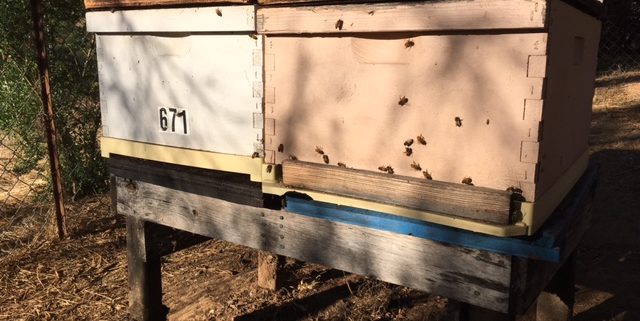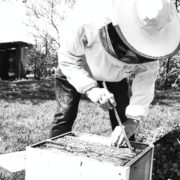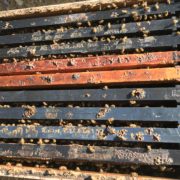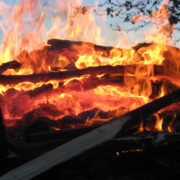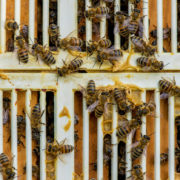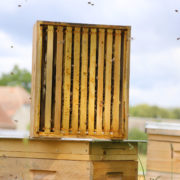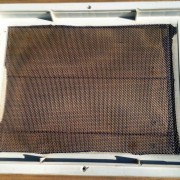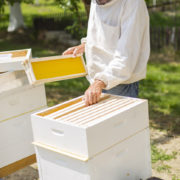The Hive Stand
Keeping a colony of bees on a hive stand is a real back saver! Lets face it, nearly everything about the mechanics of beekeeping – the awkward shaped boxes, the heaviness of the honey, the repetitive tasks of bending over time and again – creates a certain recipe for back pain. Given all of these back straining tasks, it is not uncommon that beekeepers will eventually develop back soreness. Therefore, one of the ways to reduce back strain is to place a bee colony on a stand.
Besides saving backs, a hive stand offers other advantages too. By keeping the colony and woodenware off the ground, the wood is less apt to rot from ground moisture. A hive stand also keeps ground critters, such as skunks, raccoons and even rattlesnakes away from the hives. In the early mornings, after a cold night the temperature a few feet off the ground is almost always slightly warmer than the temperature directly on the ground.
Another advantage of a hive stand is that if ants are harassing the colony, a conscientious beekeeper can place the legs of the hive stand in cups of vegetable or cooking oil, thereby building a barrier to keep the ants at bay. This is a nice organic method of ant control that avoids the use of pesticides.
Most commercial beekeepers do not use hive stands. Given that the larger commercial beekeepers usually manage their bees on pallets – either four or six colonies to a pallet – a hive stand simply will not work for them. Here at Wildflower Meadows, although we do not use pallets, we also generally do not use hive stands either. We simply have too many mating nucs and too many pollination colonies that need to be moved throughout the year to be able to efficiently take advantage of the benefits of hive stands.
At our breeding apiary, however, we make an exception and place our breeding colonies on stands. It makes perfect sense, as the breeder colonies do not move from place to place. And, since we work with these colonies nearly every day, it is a relief to all of us not to have to bend at the waist while working within the breeding apiary!
The Wildflower Meadows hive stand design, pictured above, is a double stand, which holds two colonies side by side. Usually we place the entrances in opposing directions, so as not to confuse the bees as to which hive to return.
Although Wildflower Meadows’ hive stands are hand-made in our wood workshop, Mann Lake makes a similar hive stand with adjustable legs!

